LIGHT, SIMPLE & STRANGE + SIMPLE MATH TO PLAY WITH + WIN 1 SBD
The light we see is very strange. Playing with simple math can show some of it's strangeness and be fun and surprising. It's kind of like playing with puzzles, but with some amazing unexpected surprises about reality.
A great example of that is @happychau123's recent Steem Your Brain Challenge. https://steemit.com/math/@happychau123/answers-for-the-steemyourbrain-challenge-1-201778t04844148z
At first glance, his interesting little puzzle looks like a very simple applied math problem. But when we played with the math, we quickly realized it had an impossible solution. The answer to the problem has an infinite velocity. Of course everyone knows that it is impossible to travel at an infinite velocity.
And when you think about it some more it gets much deeper. We cannot even travel at the speed of light, which is very fast, but still much less than infinity. The simple math of light is very strange indeed.
In our everyday experience, light is so fast that it seems to be infinite. But in the vast distances of our planets and stars, light is very slow.
Only 12 men have ever walked on the Moon and 6 of them got to drove around on the Moon on a custom dune buggy, called the Lunar Rover or Moon Buggy. They did all this a long time ago, from 1969 to 1972.
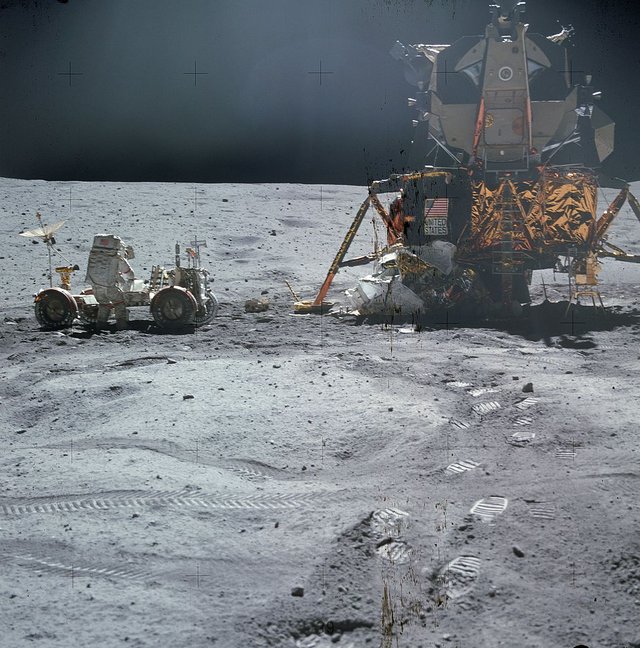
On the Moon, John Young works at the LRV (Moon Buggy) near the LM (Landing Module) Orion on the Apollo 16 Mission in April 1972. Source: wikipedia.org
There are still 3 Moon Buggies sitting on the Moon where they were left behind. They probably need new batteries if you go to the Moon and want to drive one of them.
On the Moon Buggy you can see the dish antennae for communicating with Earth. When they sent a message back to Earth, how long did the message take to reach us here on Earth?
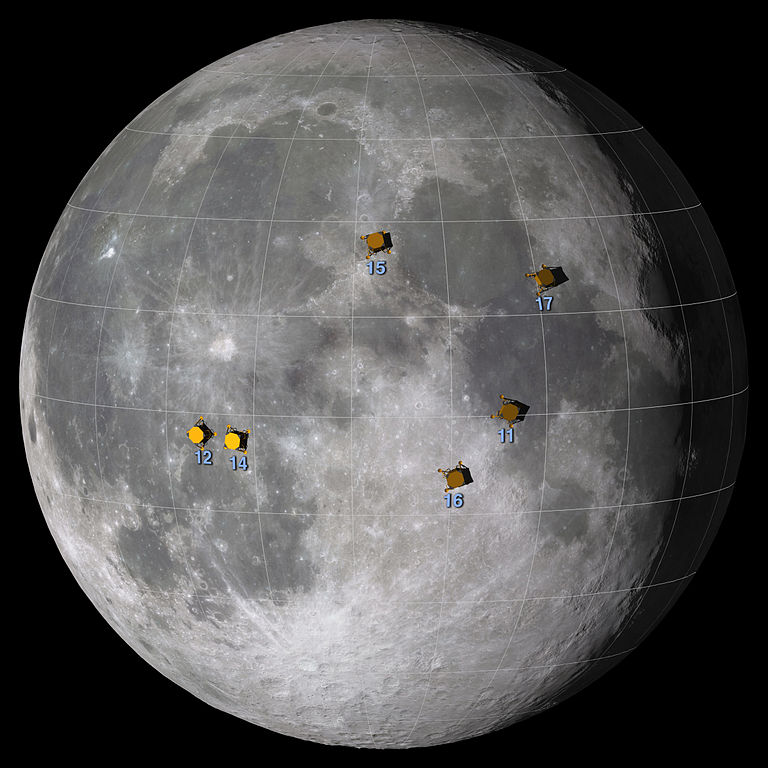
This is where people have been on the Moon. Source: wikipedia.org
Calculating how long it takes for a message, travelling at the speed of light, to go from the Moon to the Earth is a simple math puzzle. We don't need to remember any formula, we just make sure the units work out. We want the number of seconds it takes for light or a radio signal from the Moon to reach the Earth.
As an interesting side note, one of my math professors in college had previously been an engineer on some of the manned space flights. He told us that for about 2 weeks before the flight, all the engineers didn't get any sleep. This was because they were busy going over and over all of their calculations looking for any little mistake, like a plus sign that should be a minus sign or anything else.
Can you imagine what it would be like if for some reason the astronauts were unable to return to earth because an engineer made a little math mistake? People would eventually figure out who made the mistake. Do you think the astronauts and their families back on earth would be a little upset with the engineer that made the math error? I imagine the astronauts out in space that were affected by the mistake would want to speak with the poor engineer that made the blunder. What could the engineer say?
Scientists also had to take into account which wavelengths of electromagnetic waves can travel easily through the Earth's atmosphere. As you can see, not all wavelengths of light can be used for communications between the Moon and the Earth. But we won't be concerned with that for our little math puzzle.

Graph showing atmospheric opacity for different wavelengths of light. Source: wikipedia.org
There was even some shortwave ham radio operators that were able to listen in on the radio communications between the Moon and the Earth. Here's the story of one of the ham operators that listened in on the radio transmission.
http://www.arrl.org/eavesdropping-on-apollo-11
Getting back to our little math puzzle, we can play with the units until we get our answer to be in the units we want. We can probably figure out that to get time on one side of the equation we probably need distance to the moon and velocity of light on the other. Let's see if the units work out:
distance (km) x velocity (km/sec) = km x km / sec = km2 / sec
That's weird. It doesn't give only seconds for the answer, so it's not the right formula.
Well lets try:
distance / velocity = km / (km / sec) = km x (sec / km) = sec x km/km = sec
This is exactly what we need.
D / V = t
This type of simple reasoning has a very fancy name, 'Dimensional Analysis' and works great for many problems with units, because if the units don't work out, then you have your formula wrong. Here's a link to a great introduction to Dimensional Analysis on wikipedia.org
https://en.wikipedia.org/wiki/Dimensional_analysis
In the 1990's, engineers at Lockheed Martin made the dumb mistake of not clearly designating what units they were using in their calculations. They mixed up English and Metric units resulting in the multi-million dollar Mars Climate Orbiter satellite to burn up in Mars atmosphere.
Making a mistake in units can also be very costly for non-scientists. Mexico uses km/hr and the USA uses mi/hr. When some Americans see a speed limit sign that says 40, they go 40 mi/hr. But the units of 40 km/hr equals about 25 mi/hr and the unaware American driver speeds way over the speed limit and becomes prey for the Mexican police.
Some old advice from many years ago that worked for me several times when I used to live close to Mexico: If you ever get stopped by a Mexican police officer, never agree to follow the officer to the police station to pay your ticket. That is where they might impound your car and imprison you for high bail money. It's best to ask the "honest looking" officer if he can take your ticket payment (never ever offer a bribe) to the police station for you because you're in a big hurry to meet your friend or relative or whoever. Also keep only a few dollars in your wallet so you can pay your ticket. Hide your other money in your socks or somewhere. Typically he (or she?) will get tired of talking with you and just decide to take your little money and go get another more cooperative victim.
The hardest part of this puzzle is knowing the distance to the moon and the speed of light. We can easily find these on the internet.
Distance to the moon (D) is about 362,000 km when it's near and when it's far, about 405,000 km. Wait, what?
The reason for this difference is that the moon's orbit around the earth is almost a circle, but not quite. The moon's orbit is slightly elliptical.
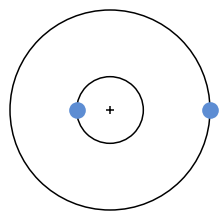
This shows 2 circular orbits gravitationally attracted. But the Moon's orbit around the Earth is slightly elliptical.
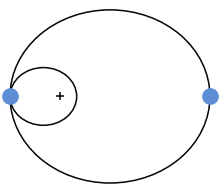
This shows a very elliptical orbits, much more elliptical than the Moon's orbit. Source: wikipedia.org
/\ /\ /\ /\ /\ /\ /\
Win 1 SBD for the first one that can calculate how much the Earth wobbles off center due to the Moon's elliptical orbit. Must post it in the comments here and show some simple math for how you arrived at your answer. And don't forget to upvote this post. Winner will be announced after the 7 days.
/\ /\ /\ /\ /\ /\ /\
Orbital speed of the Moon around the Earth is about 1 km / sec (not needed for this puzzle, but a very interesting fact I saw on wikipedia.org.
1 km / sec = 60 km / min = 360 km / hr
The moon is much slower than an airliner. Cool !
Now back to our little math puzzle.
Speed of light (c) is about 300,000 km / sec
D / c = 362,000 km / 300,000 km/sec = 1.2 sec
The message from the moon took at least 1.2 sec. When the moon is far about 1.35 sec. That's pretty quick.
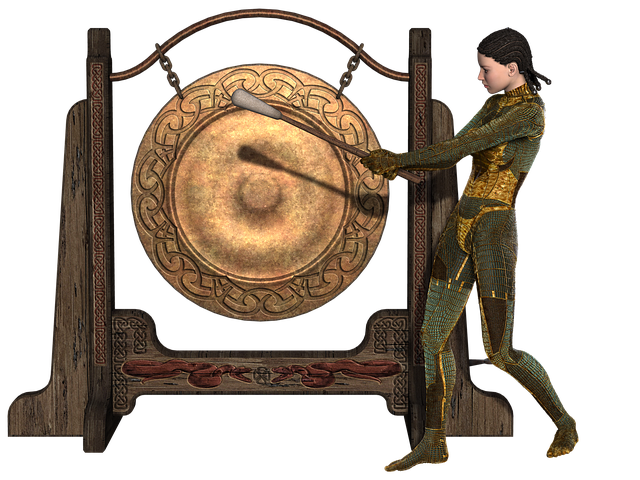
Warrior Girl hitting Gong. Source: pixabay.com
The speed of sound is about Vs = 343 m/sec = 0.343 km/sec. If someone 0.42 km away hits a large gong, how many seconds would it take for us to see her when she hits the gong?
D / c = 0.42 km / 300,000 km/sec = 0.0000014 sec almost immediately.
How many seconds would it take for the gong sound to reach us?
D / Vs = 0.42 km / 0.343 km/sec = 1.22 sec
That's about how long it takes for light from the moon to reach earth.
How long does it take for the light from the sun to reach us?
Distance to the sun is about 150,000,000 km = 1.5 x108 km
D/c = 150,000,000 km / 300,000 km/sec = 500 sec = 8 min 20 sec
Anything that happens on the sun is not seen by us for over 8 minutes!
How far can sound travel in the air in 8 min 20 sec?
Vs t = D
0.434 km/sec x 500 sec = 217 km
Everything we see and hear is in the past. When we look at the stars in the sky, we are looking far into the past. Have you ever seen the Andromeda Galaxy? It's the farthest thing in the universe that we can see with our bare eyes (no telescope). It is so far away, it's light takes about 2,500,000 years to reach our eyes. When we see the Andromeda Galaxy, we are seeing 2.5 million years into the past.
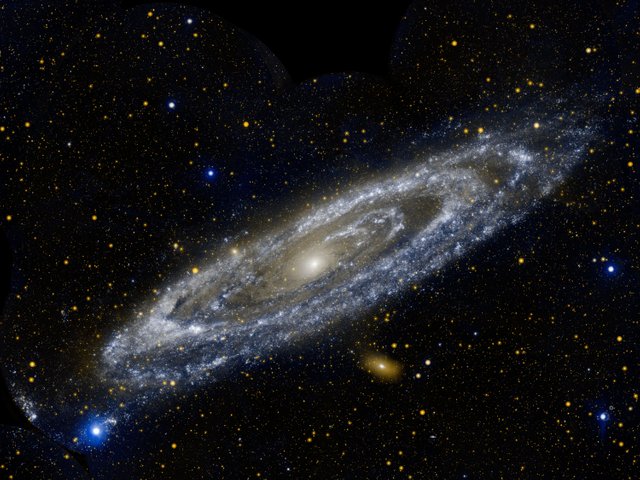
Andromeda Galaxy. Source: wikipedia.org
How about the North Star? Do you know which star is the North Star? It's much closer than the Andromeda Galaxy, but still so far away that the light from the North Star takes about 217 years to reach earth. What we are seeing is where it was 217 years ago. For all we really know, the North Star might not even be there any more.

North Star in 45 min. time lapse photo. Source: wikipedia.org
It was about the year 1800 when the North Star's light started it's journey to earth. Life on earth was very different back then for all of our ancestors. No internet, no cell phone, no tv, no airplanes, no cars, no electricity for their homes, no refrigerators, and no recorded music. The only time anyone heard music is when a musician would perform. The fastest anyone on Earth ever traveled was on the back of a horse. We've come a long way since then, thanks to people playing with math and science.

American cowboy in 1888. Source: wikipedia.org
Another very strange math result is that time actually slows down for an object or person with velocity. The slowing of time becomes noticeable with very high velocities like that of our GPS (Global Positioning System) satellites, which must be adjusted according to Einstein's very famous equation E = mc2 to give us accurate positions on Earth. The GPS people call this the 'clock deviation.'
Einstein's equation, so simple, and yet so strange, is very interesting and worth another post to see how strange it is just using simple math.
Thinking about math puzzles is fun.
If you would like to see a recent Simplify Math Contest that plays with 'imaginary' numbers, you can click here.
https://steemit.com/math/@point/winners-and-answer-to-the-win-sbd-in-this-math-contest-1-simplify
If you would like to watch the simple Heart Equation go into resonance, you can click here.
https://steemit.com/math/@point/motion-math-art-watch-the-heart-equation-become-almost-alive-with-some-awesome-motion
So until next time....

Thank you so much for mentioning :)
This is a very long post, I will read this tmr :)
(voted for you using minnowsupport)
Thank you.